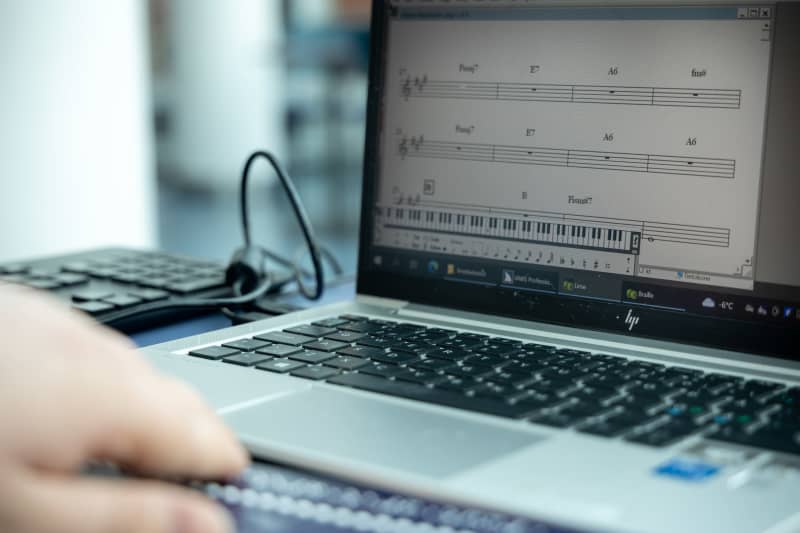Visually impaired people are still unequal compared to sighted music lovers. Hobby and study can be costly.
Blind since birth, Köngäs is one of the few visually impaired students who aspires to become a musician. The pursuit and study of music has become more important to him every year.
– As a musician, I get to learn like everyone else and I’m on the same page as my fellow students. Even if some things apply because of my blindness, we are all in the same boat. I also get to network with other people and that means a lot,” says Köngäs.
Ojala, blind since birth, is a Finnish pioneer in timpani scoring and music teaching and has also served as a mentor and teacher to Ville Könks.
Studying is also a financial burden for the visually impaired
Although Ville Könkä’s career as a musician seems promising, the opportunities for many other visually impaired people to practice music are not as good.
– There is not enough know-how in music education for the visually impaired in Finland. Teaching is not uniform and the quality of teaching can only depend on the activity of one teacher, says Ojala.
Those who study music as a hobby have to pay a pretty penny to get a good notation program.
– For example, high-quality software made specifically for the visually impaired costs around 2,400 euros, says Joose Ojala.
A visually impaired person can receive support from Kela to acquire such a program only if it is needed in the education leading to a degree, which functions as vocational rehabilitation. You cannot get this support for a music hobby.
Ojala believes that there would be more visually impaired people interested in learning sheet music if there was more information about accessible options and if the hobby was also financially supported.
If you don’t do it first, studying for a profession may not materialize.
– A blind music enthusiast can hit a wall if he thinks he has no chance of learning sheet music. Then he won’t necessarily apply for professional studies either, says Ojala.
Working with bog seines requires special attention and concentration
Braille notes are musical notes made on the basis of braille. Visually impaired people read it with their fingertips like braille.
– It can express the same things as in black and white musical notation. Scores can be studied at many levels. Learning a simple melody is relatively easy, but for example, a polyphonic piano score written for two hands takes more time, says Ojala.
According to Ojala, point notation requires a lot of precision and intense concentration
– It’s a system that can only be read one character at a time, so it doesn’t give the same overall impression as a traditional black-and-white sheet music image for those who can see.
There are too few blind examples
The UN Convention on the Rights of Persons with Disabilities requires that people with disabilities have the right to art and culture.
– There hasn’t been enough information, guidance, or the example set by other visually impaired musicians.
They say that a music student or enthusiast must be approached holistically and it must be found out what support measures he needs due to his visual impairment.
Not all visually impaired people can read Braille. However, they may benefit from, for example, a wide variety of audio materials, and the functions of various music notation programs can be used to help them.
Joose Ojala would hope that the Ministry of Education and Culture would also react to the situation. In his opinion, it should be recorded how the visually impaired should be treated in educational institutions and who is responsible for their music education.

Inequalities for people with disabilities are more widespread
For example, study counselors have a reasonably weak knowledge of issues related to the study guidance of a disabled person.
– This will undoubtedly have an impact on whether young people with disabilities pursue their dream profession or take a broader look at their career options, says Heini.
Finland has SORA legislation, which applies to both vocational and higher education. The regulations entered into force before the UN Convention on Disability entered into force in Finland.
They give educational institutions the opportunity to cancel a student’s right to study if the education or later working in the profession includes safety requirements that the student could not meet according to the educational institution and if the obstacle cannot be removed with reasonable measures.
However, according to Hein, there have been excesses and groundlessness in the cancellation of study rights.
The Equality Act also obliges education organizers to promote equality, and the education organizer must make appropriate and reasonable adjustments necessary in the given situation, so that a person with a disability can receive education on an equal basis with others.
However, often the problems of visually impaired students are not even noticed.
– For those applying to become students, the problems may never even come up. Sometimes a disabled person may not even apply to become a student in the SORA field if it is forbidden to him during the guidance and application phase. Discrimination in studies can therefore remain hidden in somewhat the same way as discrimination at work, Heini points out.
